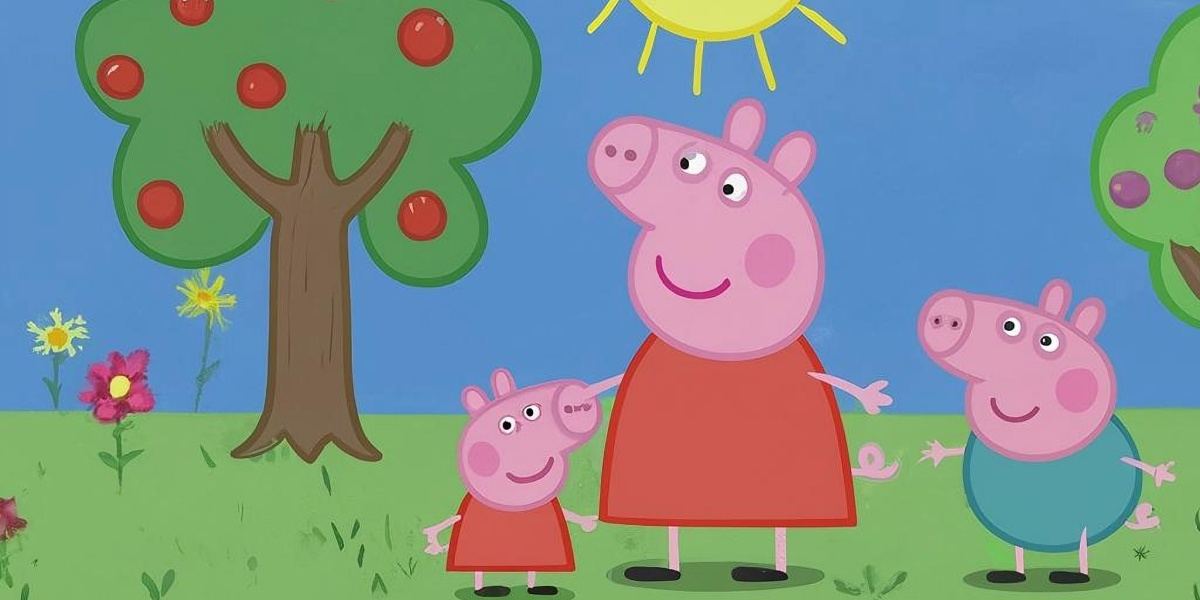The Rising Tide Of Global Forest Loss: A Wildfire Crisis

Table of Contents
The Devastating Impact of Wildfires on Global Forest Loss
The dramatic increase in wildfires significantly contributes to the alarming rates of global forest loss. This is driven by a complex interplay of factors, resulting in unprecedented devastation across the globe.
Increased Frequency and Intensity of Wildfires
Climate change is undeniably the primary driver behind the intensified wildfire crisis. Rising global temperatures, prolonged droughts, and altered weather patterns create ideal conditions for ignition and rapid fire spread. These conditions are exacerbated by human activities.
- Climate Change Impacts: Longer, hotter summers with reduced rainfall create tinder-dry landscapes, easily ignited by lightning strikes or human activity. Stronger winds further accelerate the spread of wildfires, increasing their intensity and destructive power.
- Changes in Land Use: Deforestation and unsustainable land management practices contribute to drier conditions, removing natural firebreaks and creating fragmented forests highly susceptible to rapid fire spread. Conversion of forests for agriculture and urbanization leaves less natural vegetation to act as a buffer against wildfires.
- Devastating Examples: The 2019-2020 Australian bushfires burned an estimated 18.6 million hectares, devastating wildlife and causing significant economic losses. Similarly, the Amazon rainforest, often called the "lungs of the planet," faces recurring and intensifying wildfires, contributing to significant global forest loss and releasing massive amounts of carbon dioxide. The scale of these events highlights the urgent need for action to address the rising tide of global forest loss.
- Specific Impacts:
- Millions of hectares of forest burned annually.
- Countless plant and animal species lost, including endangered and endemic species.
- Billions of dollars in economic damage, including property loss, disrupted tourism, and decreased agricultural productivity.
The Role of Deforestation in Wildfire Vulnerability
Deforestation significantly increases wildfire vulnerability. The removal of trees eliminates natural barriers to fire spread, creating continuous fuel sources for larger and more intense wildfires.
- Illegal Logging: Illegal logging activities often leave behind debris and dry undergrowth, providing abundant fuel for fires. These practices also create fragmented forest landscapes, making them more susceptible to ignition and rapid fire spread.
- Unsustainable Forestry Practices: Unsustainable logging techniques, such as clear-cutting, remove large areas of forest cover, leaving behind exposed, dry land. This lack of tree cover increases the likelihood of wildfires and makes them harder to control.
- Agricultural Expansion: The conversion of forests for agriculture, particularly large-scale monoculture farming, eliminates natural firebreaks and creates vast areas of flammable vegetation. This practice is a leading driver of deforestation and wildfire risk in many regions.
- Link Between Deforestation and Wildfires: Studies have shown a clear correlation between deforestation rates and subsequent wildfire events. Regions with high rates of deforestation experience significantly more frequent and severe wildfires.
The Far-Reaching Consequences of Global Forest Loss
The consequences of global forest loss extend far beyond the immediate destruction caused by wildfires. They have profound and interconnected impacts on the environment, biodiversity, and human societies.
Climate Change Exacerbation
Forests play a critical role in regulating the Earth's climate. They act as massive carbon sinks, absorbing carbon dioxide from the atmosphere. Their destruction releases this stored carbon, accelerating climate change.
- Carbon Release: Burning forests releases vast quantities of carbon dioxide (CO2), methane (CH4), and nitrous oxide (N2O) – potent greenhouse gases that trap heat in the atmosphere and contribute significantly to global warming.
- Positive Feedback Loop: Forest loss leads to increased wildfires, which in turn release more carbon, further accelerating climate change and creating a devastating positive feedback loop. This cycle intensifies the frequency and severity of future wildfires, perpetuating the crisis.
- Contribution to Greenhouse Gas Emissions: Deforestation and wildfires are estimated to contribute significantly to global greenhouse gas emissions, accounting for a substantial portion of total anthropogenic CO2 emissions.
- Impacts of Increased CO2: Increased atmospheric CO2 levels lead to rising global temperatures, more frequent and severe heatwaves, altered precipitation patterns, and increased ocean acidification.
Biodiversity Loss and Ecosystem Disruption
Forests are biodiversity hotspots, home to an incredible array of plant and animal species. Their destruction leads to habitat loss, fragmentation, and biodiversity decline.
- Habitat Loss and Species Extinction: Many species are unable to adapt to the rapid changes caused by deforestation and wildfires, leading to population declines and extinction. The loss of forest habitat directly impacts numerous plants, animals, fungi, and microorganisms.
- Endangered Species: Numerous endangered species are directly threatened by global forest loss and wildfires. These include iconic animals like orangutans, tigers, and elephants, whose habitats are shrinking at an alarming rate.
- Ecosystem Service Disruption: Forests provide vital ecosystem services, such as clean water, soil stabilization, pollination, and climate regulation. Their destruction disrupts these services, impacting human livelihoods and environmental health.
- Cascading Effects: The loss of biodiversity leads to cascading effects throughout the ecosystem, impacting food webs, nutrient cycling, and overall ecosystem stability.
Socioeconomic Impacts
The consequences of global forest loss are particularly severe for indigenous communities and local populations who depend directly on forests for their livelihoods.
- Impact on Indigenous Communities: Indigenous communities often rely on forests for food, medicine, shelter, and cultural practices. Forest loss disrupts their traditional way of life and poses significant threats to their cultural heritage.
- Economic Consequences: Forest loss results in significant economic losses, including reduced timber production, decreased tourism revenue, and lower agricultural productivity. The loss of ecosystem services also has substantial economic implications.
- Communities Directly Impacted: Millions of people worldwide are directly impacted by forest loss and wildfires, facing displacement, loss of income, and increased poverty.
- Socioeconomic Implications: The consequences of forest loss include food insecurity, water scarcity, increased health risks, and social unrest.
Combating Global Forest Loss: Strategies for Mitigation and Prevention
Combating global forest loss requires a comprehensive and collaborative approach that addresses the underlying causes and implements effective mitigation strategies.
Strengthening Forest Management and Conservation Efforts
Sustainable forest management practices are crucial to protecting existing forests and promoting reforestation efforts.
- Sustainable Forestry: Implementing sustainable logging techniques, such as selective logging and reduced-impact logging, minimizes forest damage and ensures the long-term health of forest ecosystems.
- Reforestation Initiatives: Planting trees in deforested areas helps restore forest cover, sequester carbon, and enhance biodiversity. Large-scale reforestation projects are vital to combating global forest loss.
- Protected Areas: Establishing and effectively managing protected areas and national parks safeguards biodiversity and minimizes the risk of wildfires. These areas provide refuge for wildlife and contribute to the overall health of forest ecosystems.
- Effective Forest Management Strategies: These include monitoring forest health, preventing and controlling wildfires, combating illegal logging, and promoting community participation in forest management.
Combating Climate Change to Reduce Wildfire Risk
Addressing climate change is essential to reducing the frequency and severity of wildfires.
- Greenhouse Gas Emission Reduction: Reducing greenhouse gas emissions through the transition to renewable energy sources, improving energy efficiency, and promoting sustainable transportation is crucial for mitigating climate change and lessening wildfire risk.
- Climate-Friendly Policies: Implementing policies that support sustainable land use practices, promote reforestation, and discourage deforestation is vital for reducing greenhouse gas emissions and combating climate change.
- Global Initiatives: Participating in and supporting global initiatives focused on climate change mitigation, such as the Paris Agreement, is crucial for collective action to address this global challenge.
- Actions Needed to Address Climate Change: These include transitioning to renewable energy, improving energy efficiency, promoting sustainable transportation, and implementing policies that support climate-friendly practices.
Community Engagement and International Cooperation
Engaging local communities and fostering international cooperation are essential for effective forest conservation.
- Community-Based Conservation: Empowering local communities to participate in forest management and conservation efforts is vital for ensuring the long-term success of these initiatives.
- International Collaboration: Sharing best practices, resources, and technologies for forest protection among countries is crucial for addressing this global challenge. International agreements and collaborative efforts are essential for coordinated action.
- Successful Community-Based Projects: Many examples demonstrate the effectiveness of community-based approaches to forest conservation, where local communities play a crucial role in managing and protecting their forests.
- Importance of Collaborative Efforts: Combating global forest loss requires a collective effort, involving governments, organizations, businesses, and local communities working together to address this global challenge.
Conclusion
Global forest loss, exacerbated by increasingly intense wildfires, presents a multifaceted crisis with profound environmental, economic, and social consequences. Addressing this challenge requires a multi-pronged approach encompassing sustainable forestry, climate change mitigation, and robust international collaboration. The devastating impact of wildfires on global forest loss necessitates immediate and decisive action.
We must act decisively to combat global forest loss. By implementing effective forest management strategies, tackling climate change, and fostering community engagement, we can protect our planet's invaluable forests and secure a sustainable future. Let's work together to prevent further devastating wildfire crises and safeguard the future of our forests. The time to act to prevent further global forest loss is now.

Featured Posts
-
 Vanja Mijatovic Ime Koje Je Promenila I Zasto
May 22, 2025
Vanja Mijatovic Ime Koje Je Promenila I Zasto
May 22, 2025 -
 3 Financial Blunders Women Often Commit A Guide To Better Financial Health
May 22, 2025
3 Financial Blunders Women Often Commit A Guide To Better Financial Health
May 22, 2025 -
 Top Gbr News Grocery Must Buys 2000 Quarter Found And Doge Poll Results
May 22, 2025
Top Gbr News Grocery Must Buys 2000 Quarter Found And Doge Poll Results
May 22, 2025 -
 Gangsta Granny Activities And Resources For Educators
May 22, 2025
Gangsta Granny Activities And Resources For Educators
May 22, 2025 -
 Peppa Pigs Parents Gender Reveal Party Details And Photos
May 22, 2025
Peppa Pigs Parents Gender Reveal Party Details And Photos
May 22, 2025
Latest Posts
-
 Blake Lively Lawyers Alleged Threat Taylor Swift Texts At The Center Of Controversy
May 22, 2025
Blake Lively Lawyers Alleged Threat Taylor Swift Texts At The Center Of Controversy
May 22, 2025 -
 Blake Livelys Lawyer Allegedly Threatened To Leak Taylor Swift Texts The Full Story
May 22, 2025
Blake Livelys Lawyer Allegedly Threatened To Leak Taylor Swift Texts The Full Story
May 22, 2025 -
 Ukrayina Poza Nato Analiz Potentsiynikh Zagroz Ta Politichnikh Naslidkiv
May 22, 2025
Ukrayina Poza Nato Analiz Potentsiynikh Zagroz Ta Politichnikh Naslidkiv
May 22, 2025 -
 Blake Lively And Taylor Swift Friendship Under Strain Following Subpoena News
May 22, 2025
Blake Lively And Taylor Swift Friendship Under Strain Following Subpoena News
May 22, 2025 -
 Nato Ta Ukrayina Chi Ye Vidmova Vid Alyansu Yedino Mozhlivim Variantom
May 22, 2025
Nato Ta Ukrayina Chi Ye Vidmova Vid Alyansu Yedino Mozhlivim Variantom
May 22, 2025
